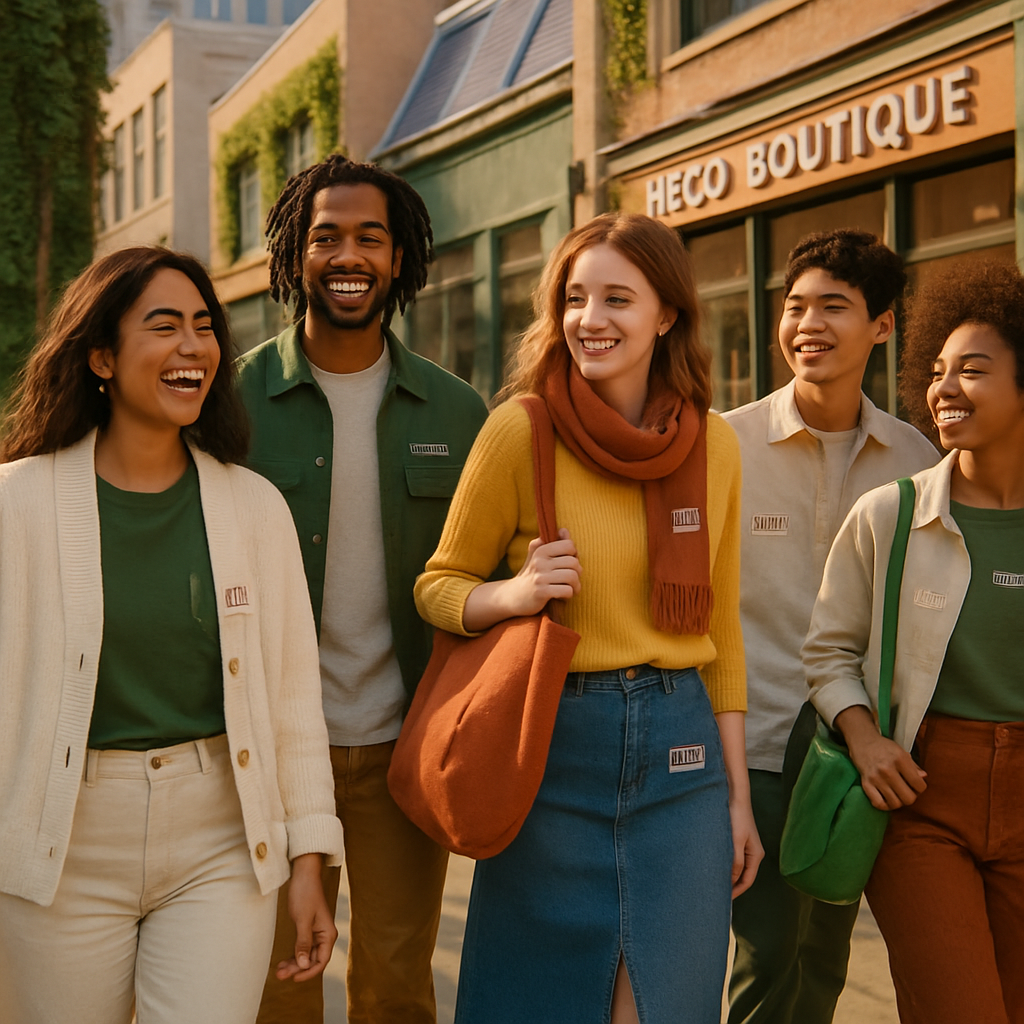Sustainable Fashion Trends Changing the Industry Today

Fashion, as a concept, is often thought of as a self-expressive art form filled with creativity and innovation. Yet, it’s also one of the industries most criticized for its environmental impact. Enter sustainable fashion: a movement that’s been growing louder and more influential in recent years. This shift isn’t just about wearing organic cotton or recycled materials anymore; it’s about a holistic change that encompasses everything from production processes to consumer mindsets.
As the world becomes more conscious of environmental issues, the fashion industry is starting to feel the heat. There’s an undeniable push to think about where our clothes come from, how they’re made, and what happens when we’re done with them. Let’s dig into some of the sustainable trends that are shaking up the industry today and, perhaps, changing it for the better.
Circular Fashion and Upcycling
One of the most compelling trends in sustainable fashion is the idea of circular fashion. The concept here is straightforward: keep clothes in use for as long as possible through reuse, recycling, and upcycling. It’s almost like a rebellious act against the traditional linear model of “take-make-dispose.” Brands like Patagonia and Eileen Fisher are champions of this approach, often encouraging customers to return used items in exchange for discounts. These brands then refurbish or recycle these garments, extending their lifespan and reducing waste.
I remember visiting a local boutique that specialized in upcycled clothing. The designer, Sarah, turned old denim jackets into patchwork masterpieces, each telling a story of its own. She wasn’t just selling clothes, she was offering narratives stitched together with creativity and sustainability. It got me thinking about how many stories are hidden in our closets, waiting for a new chapter.
Slow Fashion and Local Production
Fast fashion is fast becoming a dirty word. The rapid production and consumption of fashion items have led to catastrophic environmental consequences. Slow fashion is the antidote, encouraging consumers to buy less but choose well. It’s about being mindful of purchasing decisions and supporting brands that prioritize quality over quantity.
Local production is a key element of this movement. By producing clothes locally, brands can ensure better working conditions and reduce the carbon footprint associated with transportation. Take, for instance, the brand Alabama Chanin, known for its hand-sewn garments made by artisans in Florence, Alabama. Their model isn’t just sustainable; it’s deeply rooted in community and tradition.
But let’s face it, slow fashion isn’t always easy on the wallet. It’s a stark reality that quality and ethical production come at a price. Yet, when I bought my first slow-fashion piece a hand-knitted sweater from a small ethical brand I noticed something. That sweater didn’t just feel like a piece of clothing; it felt like a piece of art, like something to cherish. And maybe that’s the point.
Tech and Sustainability
Tech in fashion is like a plot twist nobody saw coming. It’s fascinating to see how technological advancements are contributing to sustainability. We’re talking about 3D printing, AI, and even blockchain. These technologies help in creating customized clothing, reducing waste, and ensuring transparency in supply chains.
For instance, 3D printing allows designers to create custom-fit garments with minimal waste, a true game-changer in minimizing fabric scraps. Fashion companies are also using AI to predict trends and manage inventory more efficiently, which cuts down on overproduction. It’s an exciting intersection of fashion and technology, though I must admit it sometimes feels like sci-fi is unfolding in my wardrobe.
And then there’s blockchain, the tech world’s overachiever, offering transparency like never before. Brands like Everledger are using blockchain technology to track the life cycle of a product, giving consumers a clear view of the journey of each piece of clothing. It’s as if you can see the DNA of your clothes, an intriguing assurance of ethical production.
Thrift Culture and Rentable Fashion
Remember when thrifting was considered a quirky pastime? Now it’s a mainstream movement, and for good reason. Thrift culture is thriving, not just because it’s budget-friendly, but because it’s a sustainable way to shop. Secondhand stores give clothes a second life, reducing the demand for new production. And let’s be honest, there’s something thrilling about finding a hidden gem on the racks of a thrift store.
Meanwhile, rentable fashion has emerged as another sustainable alternative. Companies like Rent the Runway and Nuuly allow customers to rent clothing items for a fraction of the purchase price. This model reduces the need for constant new purchases and appeals to those who crave variety without the guilt of overconsumption.
I once rented a designer dress for a wedding, and it was liberating. No buyer’s remorse, no clutter in my closet, and a sense of style that didn’t cost the earth literally. It made me wonder why this wasn’t the norm already.
Challenges and Uncertainties
Despite the strides being made, sustainable fashion isn’t without its challenges. For one, there’s the issue of greenwashing, where brands falsely claim to be environmentally friendly. It’s a tricky terrain, and as consumers, it requires us to be more informed and vigilant.
And then, there’s the question of scalability. Can these sustainable practices be adopted on a larger scale? Will they meet the demands of a global market without compromising on ethics? It’s a complex puzzle, and frankly, I don’t have all the answers. But I do believe that small changes can lead to significant impacts.
Somewhere along the line, I realized that fashion is as much about the journey as it is about the destination. It’s a narrative that involves choices choices about who makes our clothes and how they are made. Perhaps it’s time we became characters in this story, actively participating rather than passively consuming.
When we start viewing fashion through the lens of sustainability, it becomes less about trends and more about timelessness. It’s not just about wearing clothes; it’s about wearing values. And maybe, just maybe, that’s a trend worth keeping.


